Southern Two-lined Salamander
Eurycea cirrigera
This beautiful species is one of two extremely unique species of Plethodontid salamanders which inhabit Michigan. It is easily characterized by its bright yellow coloration and two distinct dark striped running down the dorsum. The sides may be darker in appearance than the dorsum between the lines, which is often lines with small dark spots. Some individuals maybe duller in appearance than others, while some are very brightly marked.
In Michigan, the Two-lined Salamander's ecology is mostly unknown. It was discovered to inhabit a small stream only a few years ago and ongoing research is continuing to help better understand its place in the state. Genetic work determined that the Two-lined Salamanders which inhabit Michigan are the southern subspecies; Eurycea cirrigera, but as to its origin whether native or introduced is still unknown.
This roaring brook is home to the Two-lined Salamander, though its current is not usually as violent as pictured above which was due to heavy rainfall the night before. Protecting this site and continuing research on the Two-lined Salamander will help to ensure its status in Michigan for years to come. It is extremely unlikely to come across this species in the state as they are exceedingly rare and localized, but any sighting should be reported to the Michigan DNR or to the Michigan Herp Atlas.
Northern Dusky Salamander
Desmognathus fuscus
Like the Two-lined Salamander, the Northern Dusky Salamander wasn't discovered until a few years ago in Michigan. It is a robust salamander which is extremely variable in cover, with some individuals being very dark in coloration while others exhibit bright hues of red. The genus name Desmognathus, comes from the Greek words desmos and gnathos, meaning ligament and jaw respectively. This refers to the large bundle of ligaments around the jaw which gives the members of this genus a large, bulging jaw in appearance. Another distinguishing characteristic for this species is the presence of a light diagonal line which extends from the back of the eye to the corner of the jaw, it is easily visible in both of the animals shown here.
Duskies are denizens of streams, seepages, and any habitat in which a trickling water source is nearby. Like the Two-lined Salamander this species is only found at one location in Michigan, a clear stream amid a mature Eastern Hemlock forest. In the early summer, females lay eggs on the undersides of rocks, logs, leaf litter, and other forms of cover. The hatching larva are completely aquatic and have well developed gills which eventually diminish over time.
Larva like the one shown above often have traces of adult coloration and usually have 6-8 faint spots which are visible on the dorsum. They retain this characteristic as they age but eventually it becomes faint or lost altogether amongst other patterning. It is extremely unlikely to come across this species in the state as they are exceedingly rare and localized, but any sighting should be reported to the Michigan DNR or to the Michigan Herp Atlas.
Four-toed Salamander
Hemidactylium scutatum
This small, secretive species is found statewide in a scattered locations where suitable habitat occurs. The Four-toed Salamander gets its name from the presence of four digits in the hind feet, while most salamander species have five digits on the hind feet. It is small in size and is generally gray in coloration with a rusty-orange tail and nose, and it may have light colored flecking along its flanks. The underside exhibits the best diagnostic character for this species, a white or cream belly with scattered black spots. There is also a noticeable constriction at the base of the tail which is not present in other Michigan salamander species which allows the Four-toed Salamander to drop its tail if necessary to avoid a predator.
Four-toed Salamanders are fairly common statewide, but may be difficult to encounter in the field as they are quite habitat specific. They are usually associated with sphagnum moss, but may also be found in and around bogs, seepages, and some vernal pools.
Females seek out sphagnum moss in the late spring and a lay a clutch of eggs within the moss and stand guard until they hatch. Though they can often be found by pulling back moss around this time, it is best to leave them be and not risk damaging eggs in the process. Though this species is likely common statewide, its current distribution within Michigan is poorly understood, so any sightings should be reported to the Michigan Herp Atlas project.
Red-backed Salamander
Plethodon cinereus
This colorful species is by far the most common species of salamander which inhabits Michigan. It is easily characterized by the red stripe which runs down its dorsum. However, this species comes in both a "redback" and "leadback" color phase. Leadback
The reason that this species is so common statewide is because of its general habitat preference. Redbacks are almost always associated with deciduous forests which may include northern hardwoods, oak-hickory, or beech-maple forests and can be found in either uplands or lowlands. They are often found under rocks, logs, leaf litter, and other sorts of debris on the forest floor.
Though common, the Red-backed Salamander plays a vital role in many of these forested ecosystems and shares habitat with the salamander species which will be covered in part two of this write up, the Ambystomatids. Watch for that post in the coming weeks. Until then, keep warm!


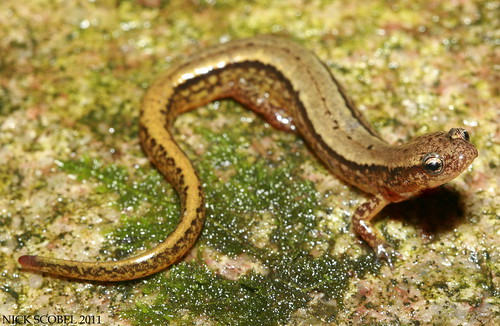


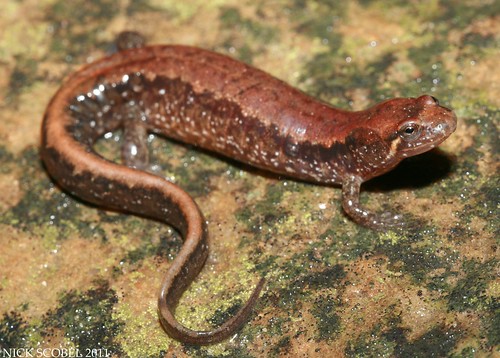

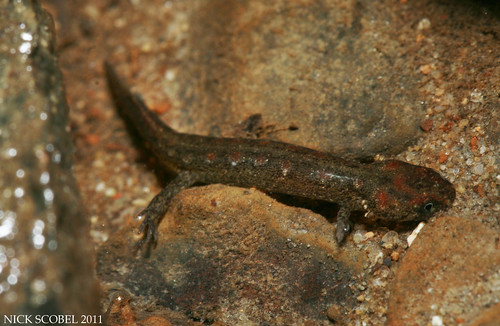
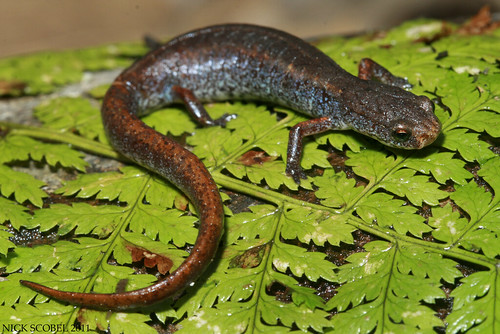
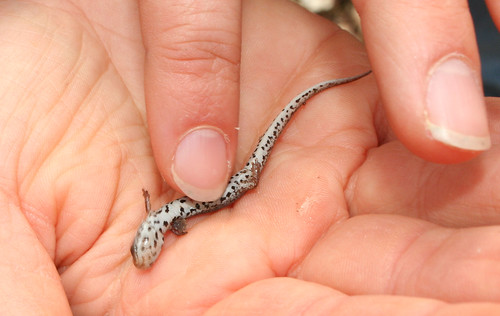



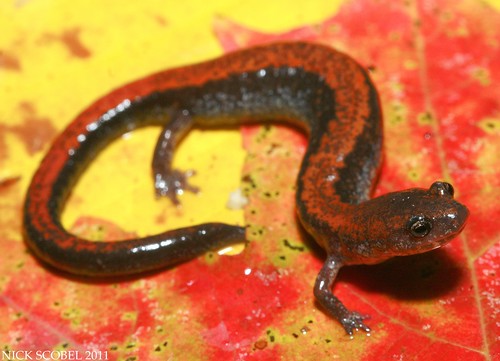


Great description and pics, Nick. I am still so fascinated by that isolated population of cirrigera in the state.
ReplyDeleteJust found your blog. Some great photos. Do you find much in the immediate vicinity of Mt. Pleasant or do you usually have to travel further afield? If you are interested, The Chippewa Valley Audubon Club is hosting a presentation on Michigan Amphibians by Jim McGrath from Nature Discovery on Wednesday March 14th at 7pm at the Veterans Memorial Library in Mt. Pleasant.
ReplyDeleteHey Nick, I owe you a book...still at the same address on Wedgewood?
ReplyDeleteE-mail me your reply...tricolorbrian@hotmail.com
ReplyDeleteI have some of the red Backs...What do they eat?
ReplyDelete